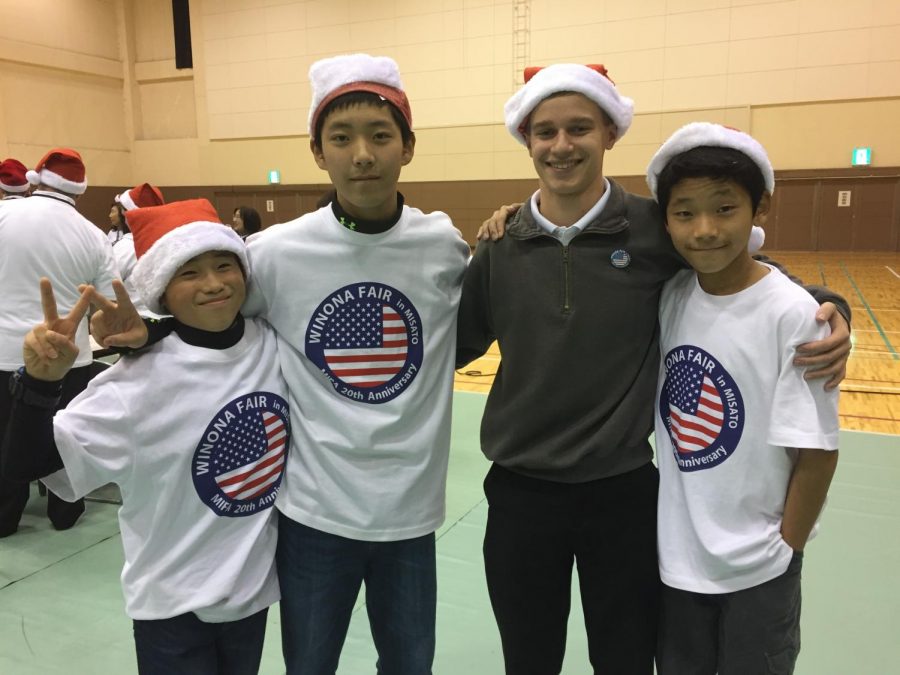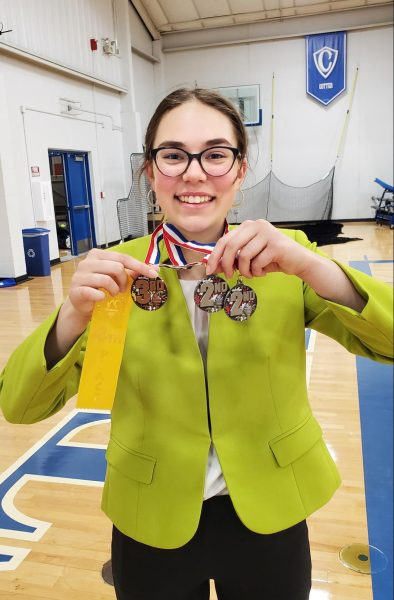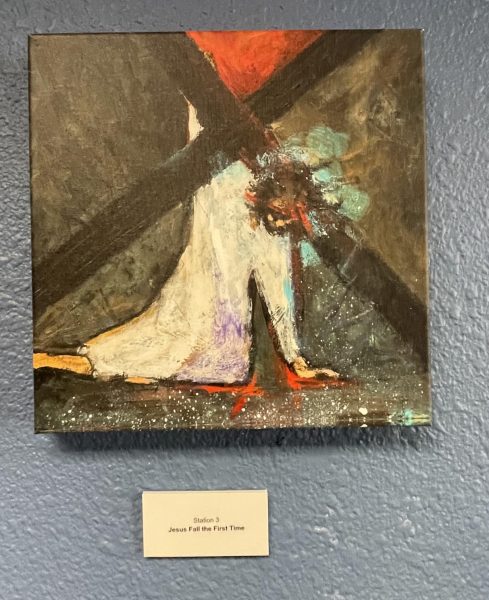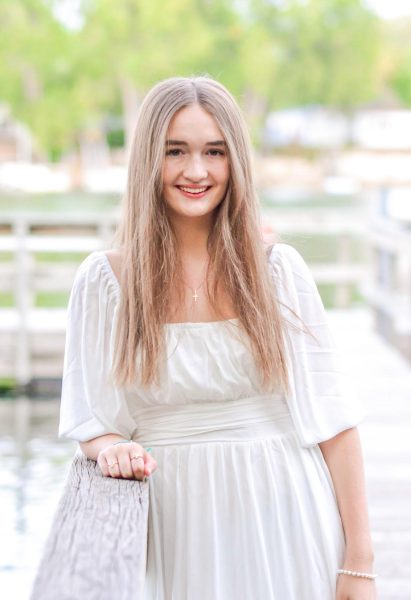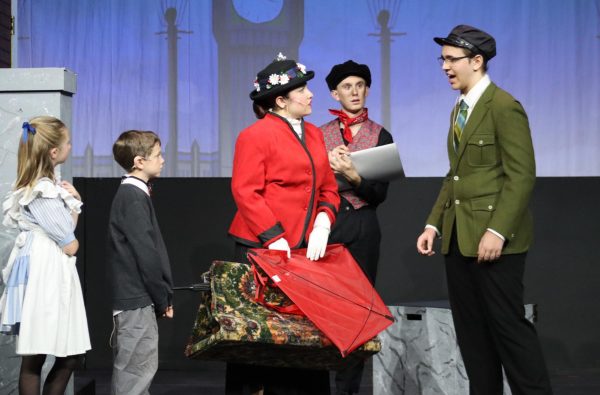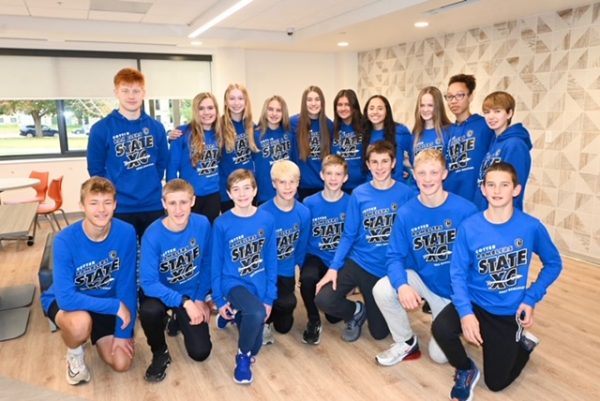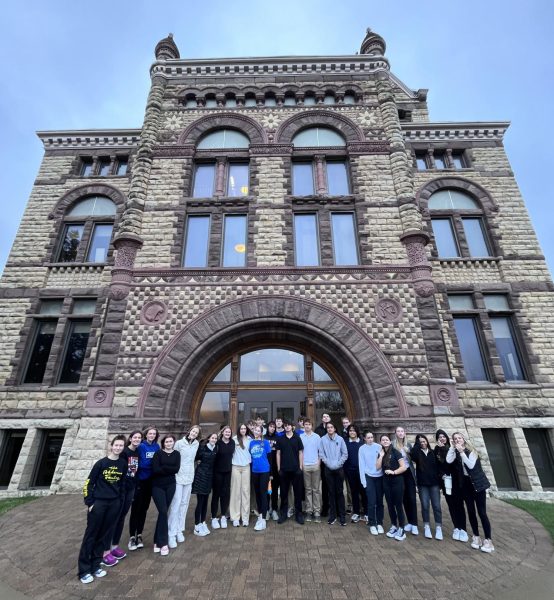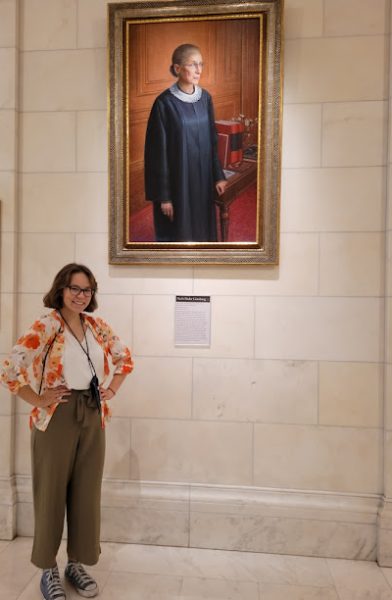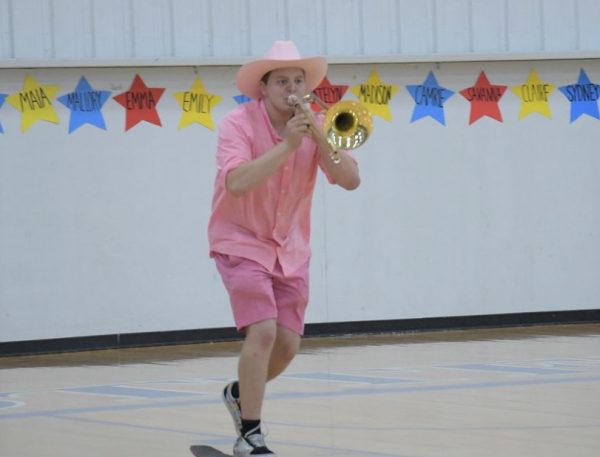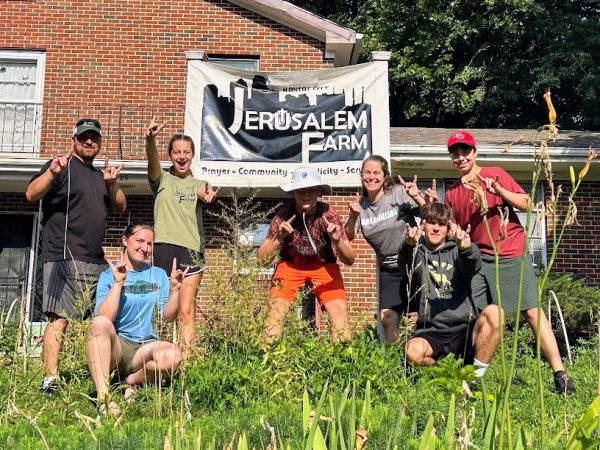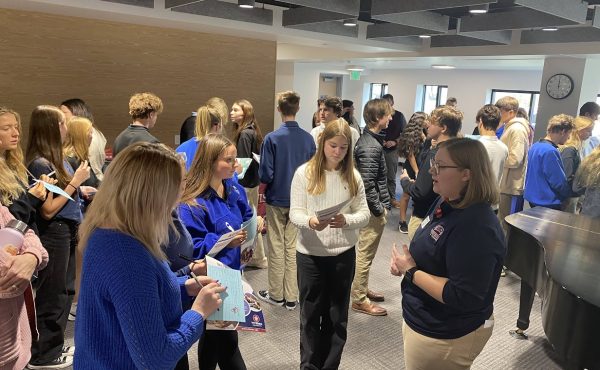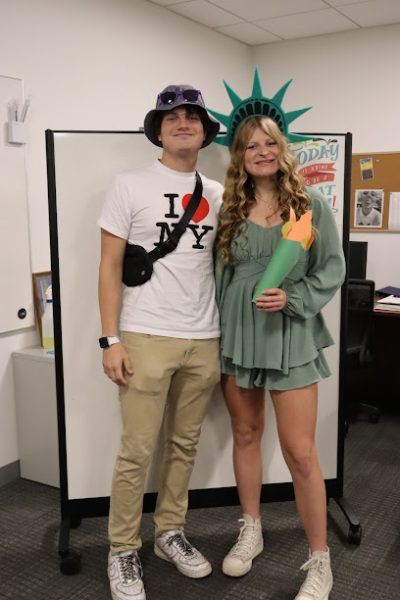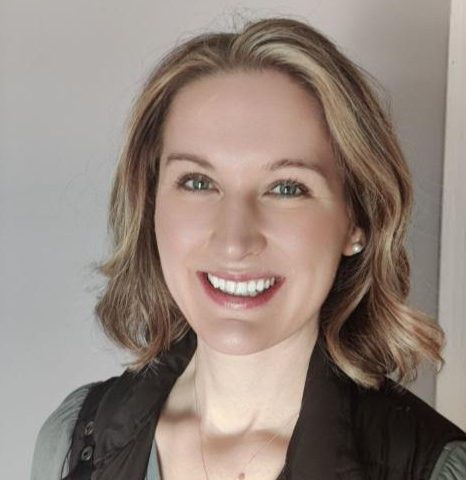Winona-Misato sister city relationship continues to flourish
We are singing “We Are Family” as one voice.
It is the night of December 4, 2016, in the city of Misato, a small town in the Miyagi Prefecture of Japan. I stood linking arms with hundreds of people — Japanese, American, old, young, short, tall. I look around at this scene, taking it all in. The joy and bliss is apparent on the faces of all those singing and the euphoria in the room is felt in every bone of the body. I will remember this experience forever, because it is the only time I’ve ever cried tears of happiness.
In a world where we constantly divide ourselves into groups (rich and poor, American and Non-American, educated and uneducated), moments where everyone joins as one voice and one people are refreshing and moving to see. This is exactly what occurred on December 4, 2016, in a small gym in the city of Misato.
This moment would not have occurred if not for a seed planted long ago that resulted in a blooming relationship between two cities halfway across the world from each other, one in the United States and one in Japan. To examine this relationship, we will begin with the seed and follow its growth from a small, feeble seedling to a strong, far-reaching tree, impacting the lives of many.
The original seed was planted by Joe Lepley, the leader in Winona of the annual trip to Misato. Firstly, it is important to note that when the relationship began, Misato was actually two different cities, Kogota and Fudodo, and Kogota was the city that the relationship was the city with which Winona first connected.
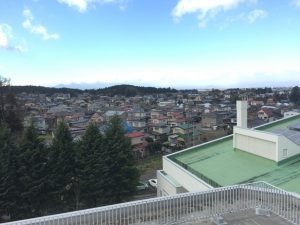
“The sister city relationship began in 1997 when Kogota officials invited Winona to join them as a sister city,” Lepley said. At the time, Winona’s mayor was Jerry Miller, and he and the city council accepted the invitation. A vital figure in the beginning of the relationship was Councilman Al Thurley, whose support and backing of the relationship allowed for it to begin and get off the ground. Councilman Thurley and Eric Sorenson, Winona’s city manager at the time, were Winona’s first visitors to Kogota.
2003 was the first year that Winona sent students and chaperones to Kogota. Ten 8th grade students and ten chaperones went on the trip. Through the years, the number and scope of the students has increased significantly. Currently, 25 8th, 9th, and 10th grade students participate each year on the trip. Additionally, the trip was originally limited to students from District 861, Winona’s public schools. Now all students from Winona in grades 8-10 are able to attend the trip.
“I would estimate that 500 Winona students and adults have traveled to Misato,” Lepley said. Additionally, many Winona families open up their homes when the Japanese students visit Winona.
As Lepley emphasizes, “The number of people affected by the exchange program is much higher when you think about all the Winona home stay family members that have been involved.”
The broad scope to which the Misato relationship has affected Winona is a sentiment that is echoed by Winona’s current mayor, Mayor Mark Peterson.
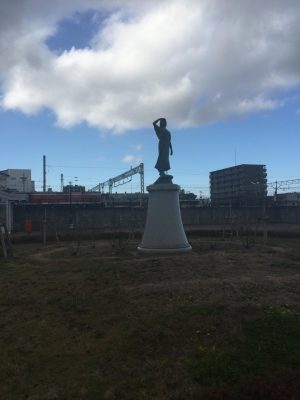
Mayor Peterson’s first experience with the relationship was as the Winona History Center’s director.
“For a number of years we’ve been doing these cultural fairs here. They were bringing [the Japanese visitors] over here for tours when they came to town, and then we started doing these cultural fairs while the students from Misato were here,” said Mayor Peterson.
He said that he was also invited to the group’s dinners. As the historical society director, Peterson was certainly involved with the relationship, but as mayor, his involvement in the sister city relationship has grown significantly.
“As mayor, I’ve had a lot bigger role to play when the Misato people come here,” said Mayor Peterson. His involvement now includes welcoming them to city hall, exchanging gifts, and attending dinners. Mayor Peterson recognizes the special experience it is for the Winona students to travel to Misato, and so when they return after their trip, he invites them to City Hall to make a presentation about their visit and the different experiences they had.
Part of the reason Mayor Peterson understands the Misato experience is because he went himself in December of 2016. Generally, the Misato delegation visits Winona around October, and the Winona delegation visits Misato around April.
However, 2016 was a special year because it marked the 20th anniversary of the Winona-Misato friendship. To commemorate this, Misato invited Winona to make an extra trip to their city in December, and also contributed a large amount of money to cover expenses.
“They made very specific requests about what they wanted. They wanted a boys and girls’ middle school basketball team, they wanted a jazz band,” Mayor Peterson said. These requests were met, but basketball and jazz music were not the only purpose of the extra visit.
Mayor Peterson elaborated, “They wanted a cultural fair. They wanted city officials to come for a resigning of the agreement, which when we did get there and did that, it was almost like some big State Department thing. It was very formal. It was a pretty cool experience. Two of us from the city council gave speeches in Japanese.”
In short, the extra visit to Misato was a special celebration to honor the hard work that had gone into maintaining and growing the two cities’ sister-city relationship and to recognize all of the lives that had been changed and all the goodwill that had come from the relationship.
Mayor Peterson says that his trip to Japan was life-changing. “I think that I’m a little more open-minded about another culture that’s different than mine,” he said. In addition to the food and sights that he experienced in Japan, Mayor Peterson says that the relationships that he made with the people of Japan are what stand out. He praises the way the trip opens people’s’ minds to another culture and way of life. As for Winona’s yearly trips to Misato, he says, “It only is a good thing for everybody to have those opportunities.”
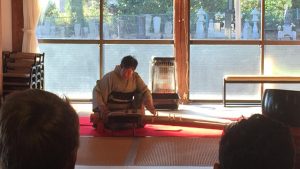
One of the Misato friendships that Mayor Peterson values is his relationship with Hiroaki Kamata. Kamata, who runs a miso and soy sauce brewing business in Misato, is an instrumental figure in the Winona-Misato relationship. He was on Misato’s first visit to Winona, going along with five students. He has stayed heavily involved through the present-day, and helps to organize the two different trips throughout the year. In addition to organizing the trips, he generally participates in Misato’s visit to Winona each October. He has visited Winona about twenty times.
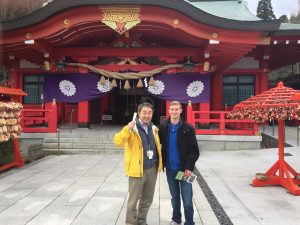
Mr. Kamata is a chairman of the Misato International Friendship Association (WIFA), the organization that oversees the sister city relationship. It was WIFA that donated the money for Winona to send an extra delegation in the winter of 2016 to celebrate the 20th anniversary of the two cities’ relationship. WIFA also organizes Misato’s yearly trip to Winona along with helping to welcome the Winona delegation each April.
The sister city relationship has a lot of benefits to it, believes Mr. Kamata. He believes that “mutual understanding, friendship, and peace” are gained by the relationship and the various friendships that are made through the relationship. All of the citizens of Misato who have participated in the exchange have “touched a different culture, met with many friends, spread the world’s perspective and have a positive impact on life,” Mr. Kamata said.
Reiko Iwanaga, a former worker at the Misato city hall, has also played a large role in the relationship. Currently, she teaches English from her home. Before this, she would work for the Misato city hall by translating English and Japanese texts, getting in contact with Mr. Lepley to help organize the Winona-Misato exchange, and also went with the Misato delegation every year to Winona to serve as an interpreter. Additionally, she would serve as an interpreter when the Winona delegation visited Misato every April.
A time that she recalls as a moment where she felt the strength of the relationship between the two cities occurred in 2011, the year of the Tohoku earthquake and tsunami. This natural disaster left more than 20,000 people dead and destroyed more than 40,000 buildings.
“I remember how much Winona people worried for us and supported the recovery of our town,” Iwanaga said. Winona held a fundraiser to raise money and contribute towards relief efforts in Misato.
Mrs. Iwanaga believes both Winona and Misato have a lot to gain from the relationship, but from Misato’s perspective, she says, “Misato’s young students can learn about and see the other countries’ culture, its people and life by themselves. These precious experiences are giving them a big chance to be an international person even when they are living in such a small town as Misato.”
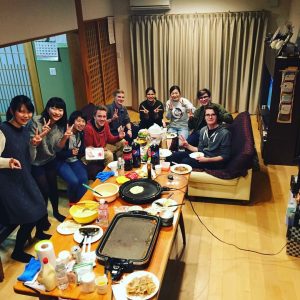
Now that we’ve seen what the relationship is and what it means to so many people, let’s return to the idea of a tree and its growth. The seed was planted in 1997, when Kogota invited Winona to join it as a sister city. Winona accepted the invitation, and in this way, the sister city relationship was born.
Councilmen Thurley and Sorenson were Winona’s first visitors to Misato, and in 2003, Winona sent its first full delegation to Misato: ten eighth-grade students and ten chaperones. Around this time, Winona welcomed Misato’s first visitors to Winona: Mr. Kamata and five students. Since then, the relationship has continued to grow. Misato and Winona steadily increased the sizes of their delegations, and currently 25 students from eighth, ninth, and tenth grade attend Winona’s trip to Misato each year, whereas Misato sends more than 20 students each year. Additionally, the scope of the Winona students increased two years ago, when the eligible Winona students for the trip increased from solely District 861 students to all students in Winona from both public and private schools.
“I think [the relationship is] as strong as it’s ever been,” Mayor Peterson says. Two cities, almost 6,000 miles apart from each other, from different countries, cultures, and ways of life, have managed to form a strong relationship in a way that we have a lot to learn from. The basis of the relationship was never business, money, commerce, or trade. It was simply for people to make connections on personal levels and have life-changing and perspective-broadening experiences through the friendships they made. As the two cities saw the incredible number of friendships and connections that were being made through the relationship, they continued to support and back the relationship, so that the relationship could grow stronger and more friendships could be made.
Back to December 4, 2016. In Misato, Japan. Everybody linking hands, singing “We are family.” Rich, poor, young, old, Japanese, American, everybody joining in one song. One song that celebrates not only the relationship between two different cities, but the happiness that is achieved when humans come together as one human family.
This is what makes the Misato-Winona relationship so special. There are thousands of “barriers” between the people. Geographic barriers, language barriers, cultural barriers. But somehow when the two cities come together, these barriers are broken down. Life-long friendships are made, unforgettable experiences are had, and the moments live on forever in the heart.
The relationship serves as a poignant reminder of the beauty that can occur when differences are set aside and people come together as one. After all, “We are family.”


